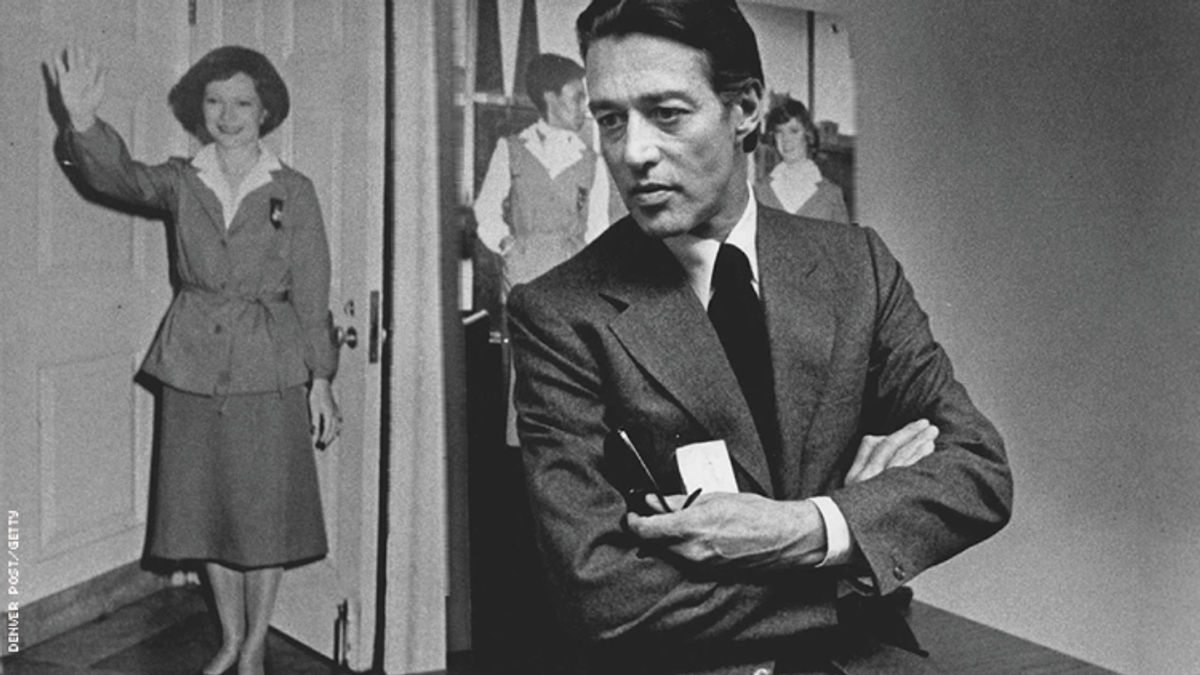Activism
New Oral History Tells the Story of HIV and the Fashion Industry

Halston
The Vogue article recalls a lost generation of talented designers whose impact still reverberates in today's clothes.
December 17 2020 5:26 PM EST
By continuing to use our site, you agree to our Privacy Policy and Terms of Use.

The Vogue article recalls a lost generation of talented designers whose impact still reverberates in today's clothes.
In a new piece for Vogue, former Out editor-in-chief Phillip Picardi has curated an oral history of the impact of HIV on the fashion industry in the 1970s and ‘80s. In the story, “An Oral History of Fashion’s Response to the AIDS Epidemic,” Picardi collected the memories of some of the key players in the industry and the burgeoning activist movement. At the time, the industry had been experiencing a renaissance of creativity from a new generation of designers, including the contributions from traditionally underrepresented and overlooked Black minds. Their stories are both heart-warming and heart-wrenching. Despite the devastation and loss, the industry in the end played a significant role in bringing awareness to the crisis and building the foundational activist organizations that pioneered modern grass roots activism.
“The idea for this piece came to me when I was still a student at NYU,” Picardi tells Plus.
He had attended an exhibit at the Fashion Institute of Technology detailing the impact of fashion on society, and was struck by the vibrancy of the designs coming from the 1960s and ’70. He described the experience as “total synesthesia” until “there was just a wall of white T-shirts denoting the late ‘80s and ‘90s. I literally said out loud, ‘what the fuck happened?’”
What happened, of course, was HIV. The experience made him realize there was a story to be told to others denied this history.
“I read about the names I never would have come across in my fashion history course or textbooks.”
Names like Willi Smith and Patrick Kelly, Picardi discovered, were bringing a new vibrancy to fashion; Smith with his affordable streetwear and Kelly creating an almost-whimsical effect using bold color and mismatched buttons, both challenging accepted concepts and norms.
“Willi Smith was everything,” activist and model Bethann Hardison told Picardi for Vogue. “Willi was the real deal.”
“Designers today need to know that Patrick Kelly opened the door,” Jose Xtravaganza, dancer and choreographer, revealed.
Their passing, along with the likes of Halston, shook the industry.
“It really didn’t hit a high point—meaning notoriety—until Halston passed away,” stylist Garren remembered. “When Halston passed, that’s when it was forced out.”
Writer Simon Noonan recalled a period full of hope and creativity, that was suddenly torn apart.
“It’s hard to describe how horrible it was to be in your 20s and all your friends are just hitting their strides and everyone’s having fun and being creative, then all of a sudden the floor just falls out from under everybody,” Noonan said.
At the time he was dating Avram Finkelstein, the co-founder of ACT Up.
“The love of my life, the person I was building my life around, died in 1984, before AIDS even had its name I formed a small consciousness-raising group with six friends and we went on to design the Silence=Death poster,” Finkelstein told Picardi.
The group Finkelstein helped form eventually adopted the poster as its own, and ACT Up was soon leading the fight against government inaction and rallying resources to help a community suffering disproportionately.
It would be impossible to tell the entire story of the impact of HIV on the fashion industry and vice versa. Picardi came to the realization in the editing process.
“There's so much we had to cut, and ultimately a lot of that was sacrificed when we decided to end the piece at Seventh on Sale (a huge HIV fundraiser) in 1990,” he lamented to Plus.